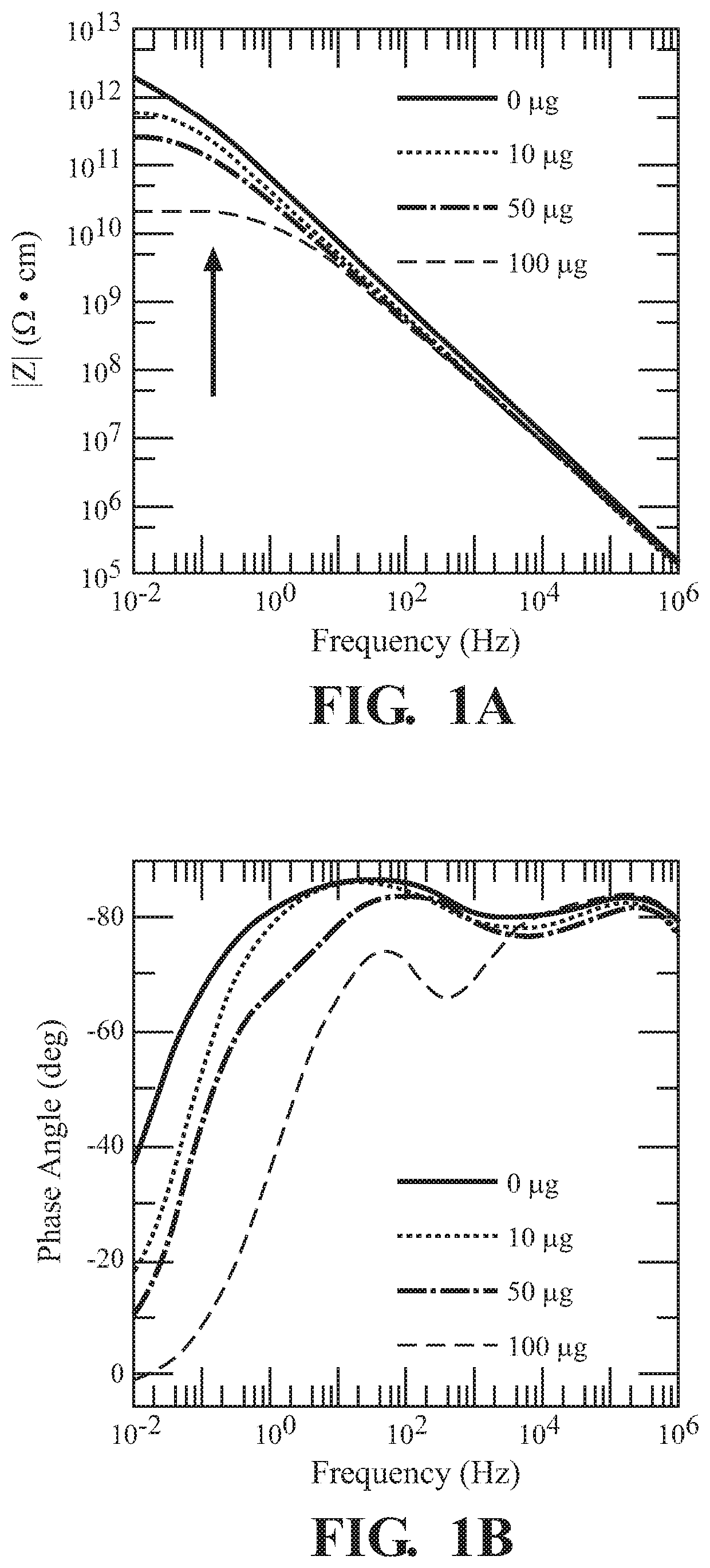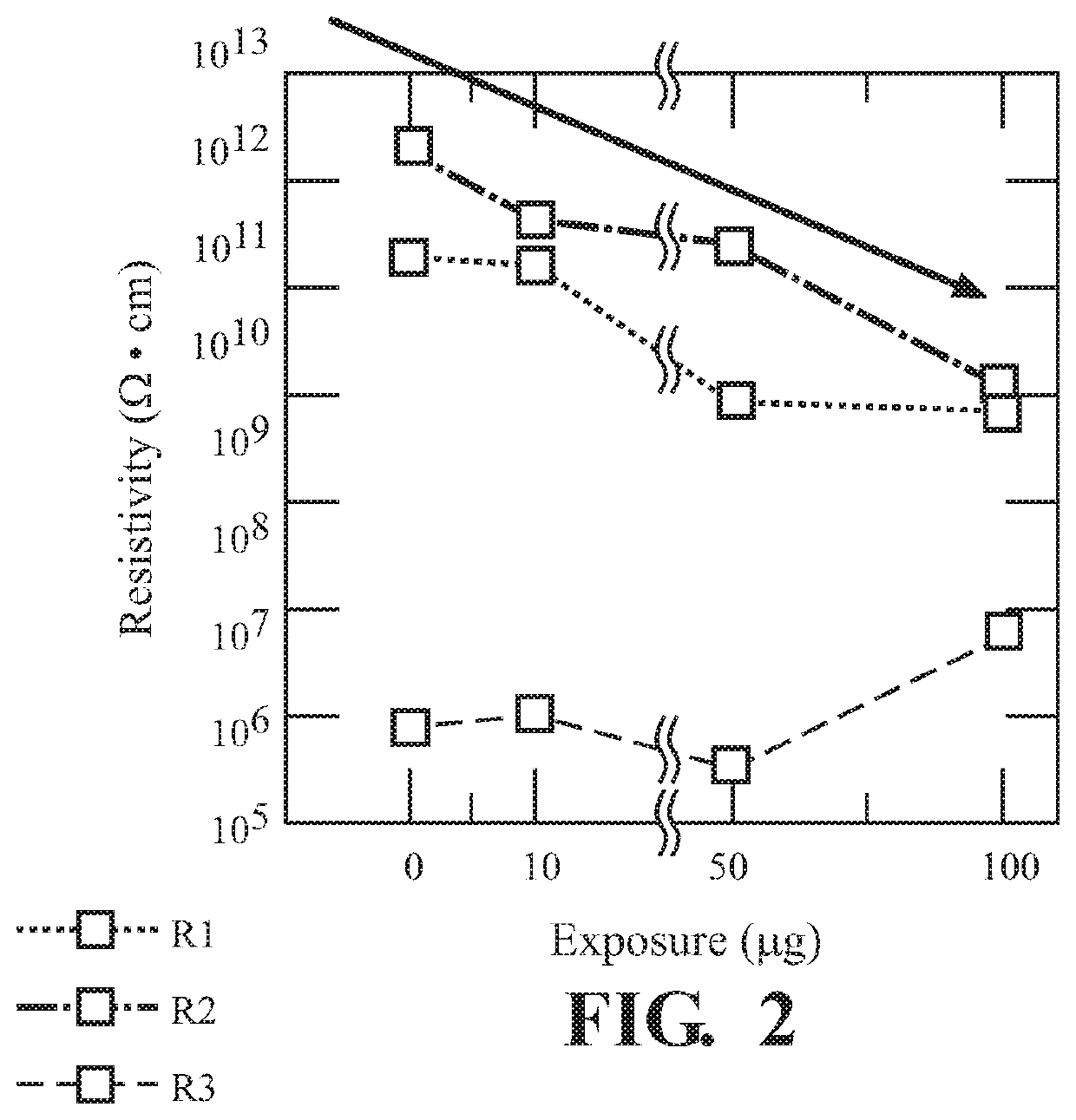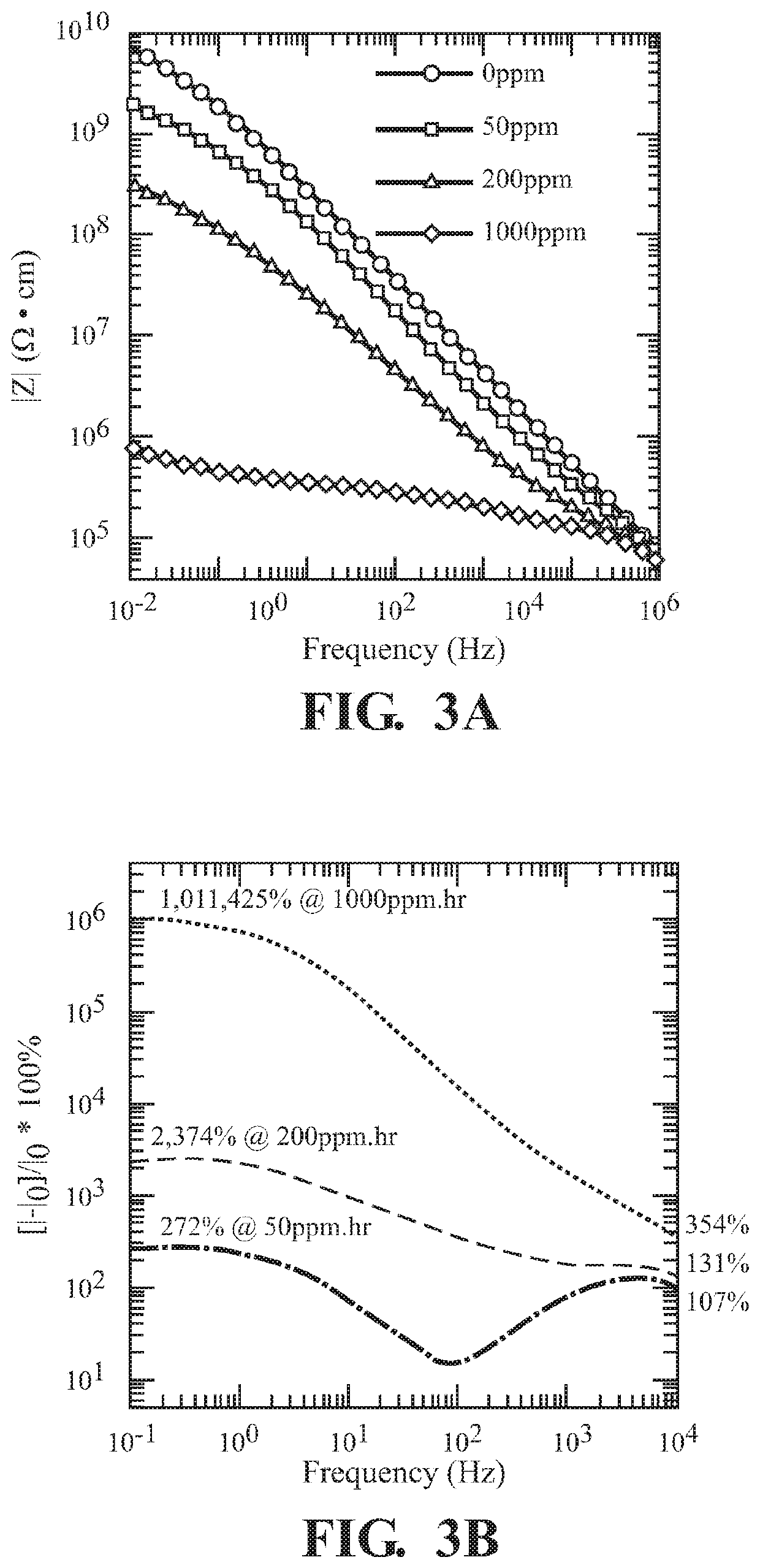Use of metal-organic frameworks and metal oxides for sensing chemicals using electrical impedance spectroscopy
a technology of electrical impedance spectroscopy and metal oxides, applied in the direction of material impedance, material analysis, instruments, etc., can solve the problems of limited response range, bulky equipment, and significant training for proper utilization, and achieve the effect of achieving fingerprints and highly sensitive detection of chemical agents
- Summary
- Abstract
- Description
- Claims
- Application Information
AI Technical Summary
Benefits of technology
Problems solved by technology
Method used
Image
Examples
example 1
Synthesis of UiO-66-NH2
[0059]UiO-66-NH2 was synthesized by Lawrence Berkeley National Laboratory. A microwave synthesis of the MOF UiO-66-NH2 was prepared using zirconium tetrachloride, 2-aminoterephthalic acid, water and dimethylformamide. The metal salt was purchased from Alfa Aesar. Additional chemicals were purchased from Sigma Aldrich. The molar composition of the reaction, is 1 Zr4+: 1 2-ATA: 3.17 H2O: 297 DMF.
[0060]400 mL of DMF and 2 mL of DI H2O were added slowly to 8.12 g of ZnCl4 in an Erlenmeyer flask (gases are produced upon addition of solvent). In a separate Erlenmeyer flask 400 mL of DMF was added to 6.275 g of 2-aminoterephthalic acid. Both mixtures were stirred until completely dissolved. The solutions were then mixed together and heated by microwave irradiation in sealed vessels at 1500 W for 9 hr at 120° C. The resulting pale yellow powder was filtered and extracted with methanol in a Soxhlet extractor, after which the material was dried in air and then heated i...
example 2
Detection of 2,6-DNT Using UiO-66-NH2
[0061]The UiO-66-NH2 made as above is used for the detection of 2,6-DNT from a liquid sample. Briefly, 2,6-DNT at amounts of 10-100 μg / cm2 powder (based on the eventual surface area of the cylindrical MOF pellet) was dissolved in approximately 5 mL of ethanol in a scintillation vial and stirred. To the solution, 500 mg of UiO-66-NH2 was added. The mixture remained uncapped and the ethanol was allowed to evaporate over the course of a day. After evaporation, the remaining detection agent powder was pressed into 25 mm diameter pellets using a Carver press at 10,000 psi. Impedance measurements were collected on all materials using a Solartron Analytical 1260 equipped with a dielectric interface 1296 and sample holder 12962 with brass plates. Voltages ranging from 10 mV to 1V and frequencies ranging from 10−2 to 106 Hz were used for EIS measurements.
[0062]FIG. 1 illustrates the, use of UiO-66-NH2 for sensing 2,6-DNT. Both the magnitude |Z| (FIG. 1A)...
example 3
Detection of NO2 Using Zr(OH)4
[0063]Zirconium hydroxide powder was obtained from MEL chemicals. The powder was formed into pellets at approximately 5000 psi and then forwarded for exposure to NO2 vapor.
[0064]Zr(OH)4 was exposed to 50, 200, and 1000 ppm of NO2. From these exposures, significant changes in (FIG. 3A) and phase angle (FIG. 3C) were observed, leading to an increase in resistive behavior. Phase angle was measured using a parallel capacitor device with applied voltage V=0.1 V. Across the frequency range, changes of 107% to 272%, 131% to 2374% and 354% to 1011425% in current were calculated from 50 ppm, 200 ppm, and 1000 ppm dosages, respectively, illustrating significant sensitivity due to the Zr(OH)4 detection agent (FIG. 3B). The log-log Nyquist plot following exposures of Zr(OH)4 pellets to 0 (grey circle), 50 (red circle), 200 (green circle), and 1000 (blue circle) ppm·hr NO2 (FIG. 3D) shows the impact of how the grain interior (highest frequency regime), grain bounda...
PUM
| Property | Measurement | Unit |
|---|---|---|
| voltage | aaaaa | aaaaa |
| frequency | aaaaa | aaaaa |
| frequency | aaaaa | aaaaa |
Abstract
Description
Claims
Application Information
 Login to View More
Login to View More - R&D
- Intellectual Property
- Life Sciences
- Materials
- Tech Scout
- Unparalleled Data Quality
- Higher Quality Content
- 60% Fewer Hallucinations
Browse by: Latest US Patents, China's latest patents, Technical Efficacy Thesaurus, Application Domain, Technology Topic, Popular Technical Reports.
© 2025 PatSnap. All rights reserved.Legal|Privacy policy|Modern Slavery Act Transparency Statement|Sitemap|About US| Contact US: help@patsnap.com



